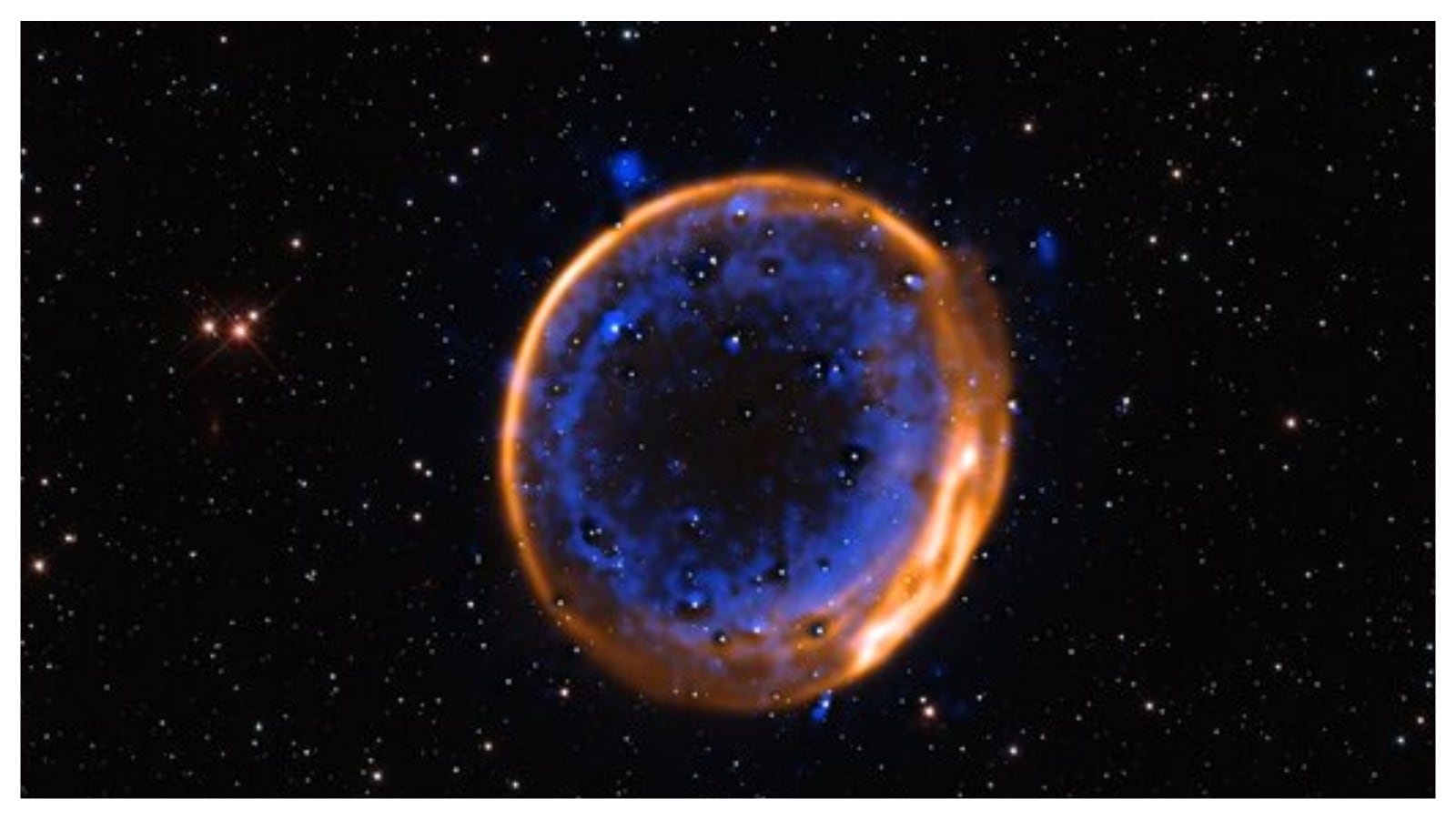For a long time, scientists believed that just like humans, stars died only once. Now, a rare sighting seems to change the widely held belief. Scientists from the European Space Observatory (ESO) have spotted the first-ever visual evidence of a double detonation of a star, meaning death twice.
“This tangible evidence of a double-detonation not only contributes towards solving a long-standing mystery, but also offers a visual spectacle,” said Priyam Das, a researcher from University of New South Wales who led the SNR 0509-67.5 study, in a statement.
By using the Very Large Telescope (VLT) and the Multi Unit Spectroscopic Explorer (MUSE) instrument, ESO scientists observed the remains of supernova SNR 0509-67.5. Located more than 160,000 light-years away, the supernova remnant is believed to have formed more than 300 years ago. The remnants reportedly showed clear indications of the supernova’s progenitor star exploding twice.
This can give an indication that a small number of stars could become supernovas without having reached the Chandrasekhar limit. This limit indicates the minimum mass of a star in order to become a supernova, which is around 1.4 times the mass of the Sun.
As per ESO’s research and data from observatories using the Hubble Space Telescope, the SNR 0509-67.5 was confirmed to be a white dwarf star. These stars undergo supernova explosions termed as “Type Ia supernovas”, which are useful to scientists while measuring cosmic distances. This is since the light that these supernovas emit is uniform, giving them the nickname “standard candles” by astronomers.
Astronomy places importance on the explosions of white dwarfs. However, the exact mechanism that triggers their explosion is still a mystery.
The common consensus among scientists is that the genesis of Type Ia supernovas is a binary system of stars, with one dying and becoming a white dwarf. If the dead white dwarf ends up orbiting too close to the second living star, then the white dwarf becomes a “stellar vampire”. This subsequently draws material from its living companion star, until the white dwarf crosses the Chandrasekhar limit.
Story continues below this ad
Then, the white dwarf explodes in a Type Ia supernova, which was previously believed to cause an eruption that destroyed the white dwarf. However, this was never considered a closed-book by scientists, and this recent research has further established the possibility of double detonations in white dwarfs.
How does a double detonation work?
As per the latest theory, when white dwarfs become stellar vampires and are drawing material from their donor stars, they end up engulfing themselves in stolen helium. This then becomes unstable and ignites, leading to the first detonation.
This explosion then generates a shockwave rippling inward, which goes on to strike the white dwarf’s core. This subsequently leads to the second detonation, which then leads to the formation of the actual supernova. This is notable since it can occur before the white dwarf’s mass exceeds that of the Chandrasekhar limit.
Scientists were able to determine that a double-detonation would cause a long-lasting “fingerprint” with the wreckage of the supernova. This has been confirmed by its presence in the SNR 0509-67.5 wreckage.
Story continues below this ad
(This article has been curated by Purv Ashar, who is an intern with The Indian Express)





Average Rating